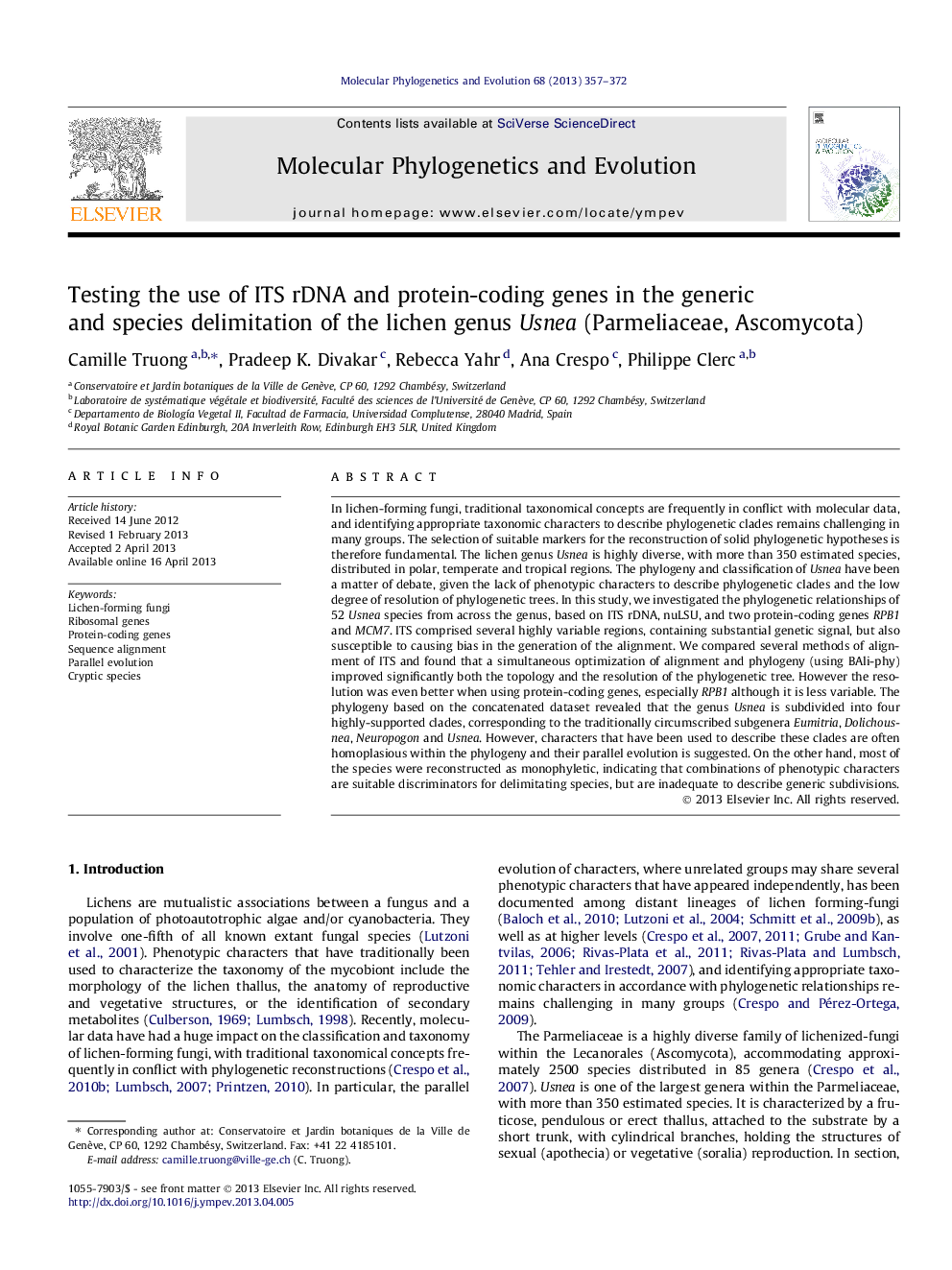| کد مقاله | کد نشریه | سال انتشار | مقاله انگلیسی | نسخه تمام متن |
|---|---|---|---|---|
| 2834003 | 1164281 | 2013 | 16 صفحه PDF | دانلود رایگان |

• The genus Usnea is subdivided into at least four highly-supported clades.
• Character homoplasy hinders the description of new generic subdivisions.
• Methods of alignment of ITS rDNA significantly influence the phylogenetic trees.
• Although less variable, protein-coding genes give a better phylogenetic resolution than ITS rDNA.
In lichen-forming fungi, traditional taxonomical concepts are frequently in conflict with molecular data, and identifying appropriate taxonomic characters to describe phylogenetic clades remains challenging in many groups. The selection of suitable markers for the reconstruction of solid phylogenetic hypotheses is therefore fundamental. The lichen genus Usnea is highly diverse, with more than 350 estimated species, distributed in polar, temperate and tropical regions. The phylogeny and classification of Usnea have been a matter of debate, given the lack of phenotypic characters to describe phylogenetic clades and the low degree of resolution of phylogenetic trees. In this study, we investigated the phylogenetic relationships of 52 Usnea species from across the genus, based on ITS rDNA, nuLSU, and two protein-coding genes RPB1 and MCM7. ITS comprised several highly variable regions, containing substantial genetic signal, but also susceptible to causing bias in the generation of the alignment. We compared several methods of alignment of ITS and found that a simultaneous optimization of alignment and phylogeny (using BAli-phy) improved significantly both the topology and the resolution of the phylogenetic tree. However the resolution was even better when using protein-coding genes, especially RPB1 although it is less variable. The phylogeny based on the concatenated dataset revealed that the genus Usnea is subdivided into four highly-supported clades, corresponding to the traditionally circumscribed subgenera Eumitria, Dolichousnea, Neuropogon and Usnea. However, characters that have been used to describe these clades are often homoplasious within the phylogeny and their parallel evolution is suggested. On the other hand, most of the species were reconstructed as monophyletic, indicating that combinations of phenotypic characters are suitable discriminators for delimitating species, but are inadequate to describe generic subdivisions.
Figure optionsDownload as PowerPoint slide
Journal: Molecular Phylogenetics and Evolution - Volume 68, Issue 2, August 2013, Pages 357–372